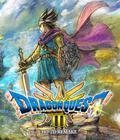Genre: Role-Playing Game
Publisher: SCEA
Developer: Game Republic
Release Date: October 9, 2007
Now that video games are cemented in mainstream entertainment, several developers have sought to open up one of the most closed genres to this new audience: the RPG, video cousin to the venerable pen-and-paper pastimes of cult stardom. BioWare has its "Star Wars"-licensed titles and Mass Effect, while Bethesda Softworks has the Elder Scrolls franchise, including the instantly accessible classic, Oblivion. With Folklore, Sony has created an RPG-styled adventure that they hope will also have mass appeal.
Folklore is a tale of murder and mystery, with a period-costume schtick. As is traditional for Japanese RPGs, the plot unfolds primarily through text; written dialogue is supplemented with spare voice acting in some cut scenes. Folklore was developed for and initially released in the Japanese market, so Japanese RPG fans will be familiar with the often stilted, abrupt use of written English; other gamers may find it disconcerting. Some of the game's static art resembles not so much Japanese manga — comic books, of course — as it does the recently popular Western graphic novels, lending Folklore an appropriate cross-cultural sensibility. The tale is much more Scottish Highlands than it is the expected Japanese RPG Candyland or future Chiba-esque alter-world.
Despite the awkward, translated dialogue, Folklore's plot and execution thereof are quite good. Unrelated player-characters Ellen and Keats are lured to a small town, Doolin. Keats reports for a paranormal mysteries publication, and he thinks events underway in Doolin may yield his next big story. Ellen is far differently motivated: She's searching for her mother. Shortly after our two protagonists meet, they are drawn into the Netherworld, given powers that would make green with envy Pokémon-famed Ash Ketchum. Both Ellen and Keats are granted abilities to procure and control the powers of Folks, Netherworld creatures, each with its own peculiar, substantial talents. What then follows is a story replete with well-conceived twists, but casual gamers beware: Time is required before you're immersed to your chin in plot.
Since Folklore is a Sony title, it proves the usefulness of the controller's motion-sensing technology when properly implemented. The SixAxis motion control is supplementary to more standard game controls rather than the core of the control mechanism, as it is on the Wii. It's still relatively rare that SixAxis adds a great deal to games, with the notable exceptions of Heavenly Sword or, if you can master it, Warhawk.
In Folklore, the controller's motion feature has found a found a fine position on the balance beam between pure dual-stick control on the one side and often virtually experimental gesture control on the other. While Folklore is perhaps not the perfect RPG game, it is a good title that makes sensible, accessible use of SixAxis motion control.
Although in Ellen and Keats Folklore features two playable characters, this device does not quite sum to double the game. You can choose at your whim to play as either role, and each character's perspective is somewhat unique, but to a great degree, Ellen and Keats are interchangeable. Both use the same Folks, ergo the same special powers, and, perhaps worse, cover the same ground on many of the same in-game levels. The chief benefit of alternating characters in Folklore is exclusive to the adventuring segments, while the combat elements remain much the same, no matter which character you choose. The title's plot-centric adventure elements can become monotonous, but it avoids inducing ennui through the differences in adventure experiences of the two main characters.
Nighttime provides the action setting in Folklore, as during the darkest hours, you can enter the Netherworld, taking advantage of the awesome might granted you by your creepy benefactors. Unfortunately, you'll have to repeat each action scenario with both characters for the full story, but the tedium of repetition is, in this case, worth it. The action elements are somewhat flawed by mechanic of tracking down magical book pages you'll need for defeating the various bosses, so the pure action in Folklore are not so pure as you'd like. Compounding this sort of obtuse requirement of combat, these pages aren't so easily discovered. It goes without saying that it's not fun backtracking game levels, wandering every square inch of them, aware you'll soon repeat the process through the eyes of a different, yet quite similar, character.
While in the Netherworld, you capture and make use of Folks, which are, by the game's definition, spirit inhabitants, and none are too friendly. A Folk sufficiently smacked around will emit a red aura, which is an "Id" in Folklore jargon. Ids rise over stunned Folk, and it is here that the game's SixAxis motion-sensing shines. In initiating a capture, tap a shoulder button, lift the controller upward, emphatically but not violently and, presto, that unfortunate Folk's Id is yours. It's a very basic mechanism not hampered by imprecise control often attributed to SixAxis motion-sensing in other titles. Once captured, Ids convey their powers; a variety of Ids are uniquely useful dependent on the context of your predicament. Picking the right Id at the right time yields some excellent gameplay scenarios, even if the levels in which these scenarios occur are excessively linear and, in some cases, rather poorly designed.
Folklore certainly appears a straightforward action/adventure game, yet designed into the game are staples more common to stock RPG titles. For example, Folks increase in power depending on the number of corresponding Ids commandeered from their former owners. Further, the game contains a number of reasonably entertaining side-quests. Folklore, all told, is quite short for a pure RPG, but it's far from a pure RPG and therefore, as a hybrid title, provides plenty of gameplay hours. Playing both characters all the way through, not skimping on the side-quests, you'll easily find 20 hours of entertainment here.
Beyond making good, if basic, use of the SixAxis controller, Folklore takes full advantage of PlayStation 3's power, creating some truly impressive visuals on technical merits. Art direction, however, could have been better. The Doolin locale is uniformly gloomy and gray, yet in direct contradiction to its name, the Netherworld sports some levels of lush forests awash in the garish colors of psychedelia; still, in places, the Netherworld lives up to its overt intimation of darkness via stark, decimated battlefields and the like. In art style, Folklore presents an often jarring lack of consistency between levels. Character costumes don't fare much better: Although consistent throughout the game, they are surely going for a particular look, and they've missed; Keats looks a bit like he dressed at random from his wardrobe, selecting his discordant ensemble in the dark.
Folklore's music is a mixed bag, too. In the Netherworld, you hear a typical Harry Potter film score, albeit appropriated by another composer for a more sinister arrangement. Then, to accentuate the difference between worlds, music in Doolin environments wildly crosses styles — here, a jazz theme, listenable but unsuited to the context. More distressing is Folklore's lack of voice acting. Folklore's hardly stellar voice acting, confined to cut scenes, disappoints, especially in such an otherwise obvious new-generation console title. In the absence of voice acting, game dialogue is conveyed through text, characters' mouths jawing up and down while pencil-scratching or typewriter sound effects loop in the background. (Certainly bizarre is an anthropomorphic character speaking with the voice of clackety-clacking typewriter typebars.)
Folklore, presenting a tale of legends, aspires itself to the status of a legendary game. Alas, the title is flawed by various shortcomings and poor design decisions, placing such grandeur beyond its grasp. But, however lofty its unfulfilled ambitions, Folklore is certainly not a bad game; indeed, it's a reasonably good game. If you've already finished all top-tier PlayStation 3 holiday titles on your personal hotlist, and you've a penchant for adventure titles or casual RPGs, you'll likely find Folklore enjoyable, if imperfect.
Score: 7.5/10
Sanford May also contributed to this review.
More articles about Folklore












 Folklore is a unique, dark fantasy adventure inspired by western fairy tales. Set in the mysterious town of Doolin, two strangers, Keats and Ellen, are drawn together to uncover a mysterious legend in a remote village that exists on the border between dreams and reality. They soon learn that the town serves as a gateway to fantastic realms, full of creatures, spirits and monsters. In order to solve the mystery of the town, and their past, the pair must journey through these worlds to uncover its secrets.
Folklore is a unique, dark fantasy adventure inspired by western fairy tales. Set in the mysterious town of Doolin, two strangers, Keats and Ellen, are drawn together to uncover a mysterious legend in a remote village that exists on the border between dreams and reality. They soon learn that the town serves as a gateway to fantastic realms, full of creatures, spirits and monsters. In order to solve the mystery of the town, and their past, the pair must journey through these worlds to uncover its secrets.






































